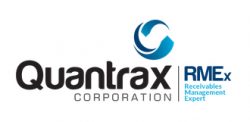
The collection industry has been a labor-intense business for the last 30 years. You have to locate people and talk to them on the phone. While we say we are automated and used modern computers, we are no Silicon Valley when it comes to innovation. Let’s think about that. Silicon Valley continues to create new companies that succeed and scale like no other area or country can claim. Why do they continue to succeed?
- They have a “no fear of failure” mentality when it comes to technology
- They make “change decisions” and see them through (e.g. We will provide customer service using e-mail with no telephone support)
- They use vast volumes of data to develop applications
- Technology’s interaction with human behavior is analyzed and leveraged
- Tech companies are experts at scaling quickly and effectively

Back to Uber. It has clearly changed public transport. It was not created to be a cheaper taxi service, just as radical new technology should not simply help you to work a little more efficiently. Uber succeeded in transforming how we think and behave. It is a new set of ideas from contacting a driver, to tracking their arrival and paying for your ride. Uber revolutionized a traditional process – The consumer prefers it, and that is why it is Quantrax Corporations Inc. Why the traditional collection agency will struggle in the next 3 years 1 winning. And what is Uber? Most of us only know Uber as a software application that runs on mobile phones!
In spite of the great promise of modern software, the collection industry has not embraced the substance of technology. If Silicon Valley was to give our industry a makeover, there would be a significant loss of jobs. The remaining jobs would be different. Agents would be collection experts with the business rules, compliance, due diligence and account management being managed by their software. Yes, collection software would close accounts on a specific date based on the statutes, and give up after the appropriate effort and resources were expended on each account. Software would make sure each different phone number was targeted evenly, and at different times in the day until an RPC was obtained. Yes, like Expedia did with travel agents, your software would effectively “clone” a collection expert, who would look at every account, every day, if needed, making decisions as your best collection experts would. All of this would represent modern computing power, wrapped around a strong, stable, platform, with features that incorporated the concepts of social media, mobile technology and artificial intelligence.
This was a difficult piece to write. Since the FCC rulings and legal challenges, many companies introduce their services and products by offering worst-case scenarios. “Most collection operations will struggle in the next 3 years” gets attention, but this was not intended to be hype. I have been in this industry for over 25 years, and I have watched Uber revolutionize and potentially destroy the taxi industry in about 2 years. Could that happen to this industry? Yes. Some companies have reacted to the call for change, and the results have ranged from positive to spectacular. The radical collection technology I have spoken about, does exist. In fact, it has been proven over a 25-year period. And just like Uber, we have faced great challenges in presenting this technology to the industry. This is not an attempt to use this forum for marketing purposes. I do believe that I had to share my background and experience to support my ideas. It is my humble and sincere opinion that this industry is in a critical period of transition. The only purpose of this article was to make people think about where they are, and what some of their options were.
Ranjan Dharmaraja / CEO
Quantrax Corporation Inc.
